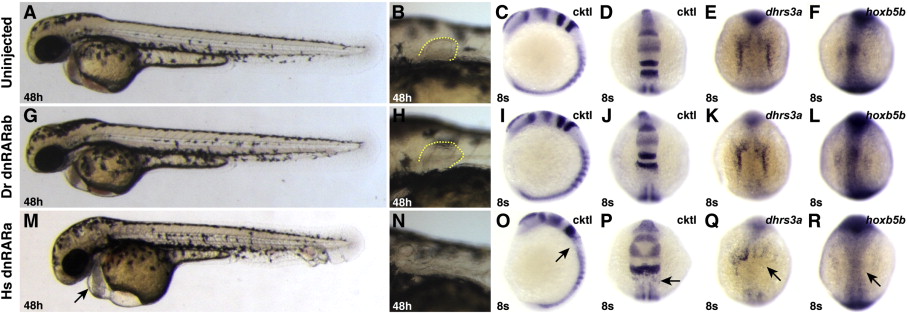Fig. 8
Zebrafish dnRARab does not act as a transcriptional repressor in zebrafish embryos. (A?F) Uninjected control embryos. (G?L) Embryos injected with zebrafish dnrarab mRNA appear equivalent to uninjected control embryos. (M?R) Injection of human dnrara mRNA causes phenotypes consistent with loss of RA signaling, including enlarged hearts (arrow in M), loss of pectoral fin (N), loss of rhombomere 5 (arrows in O and P), and loss of endogenous target gene expression (arrows in Q and R). Phenotypes induces by injection of the human dnrara mRNA are similar to, if not stronger than, those induced when the human dnRARa is expressed from a heat-shock inducible transgene (Waxman et al., 2008). Cktl of probes is the same as in Fig. 6. (A?C, G?I, M?O) Images are lateral views with dorsal to the right. (D?F, J?L, P?R) Images are dorsal views, anterior up.
Reprinted from Developmental Biology, 352(1), Waxman, J.S., and Yelon, D., Zebrafish retinoic acid receptors function as context-dependent transcriptional activators, 128-140, Copyright (2011) with permission from Elsevier. Full text @ Dev. Biol.

